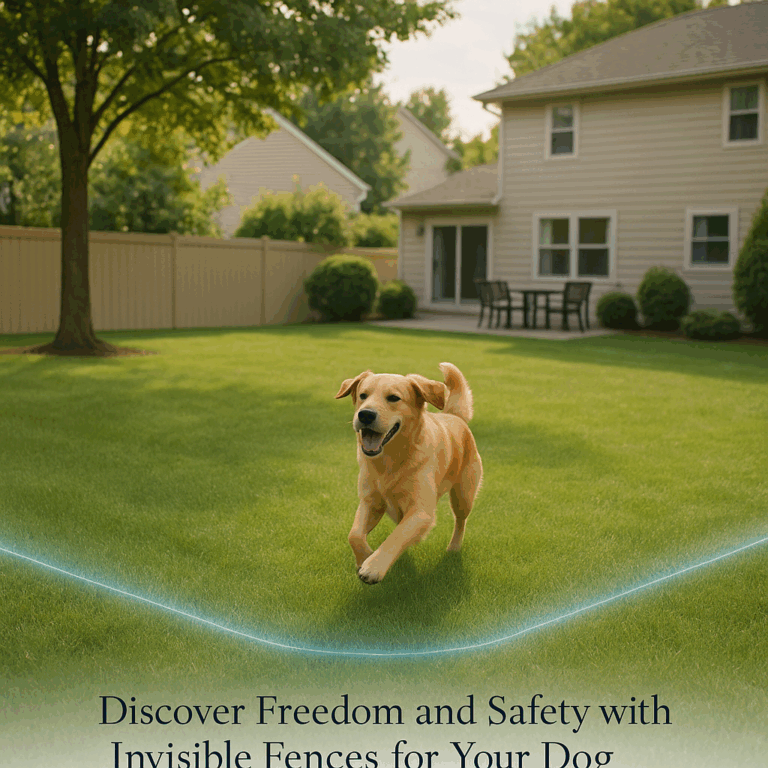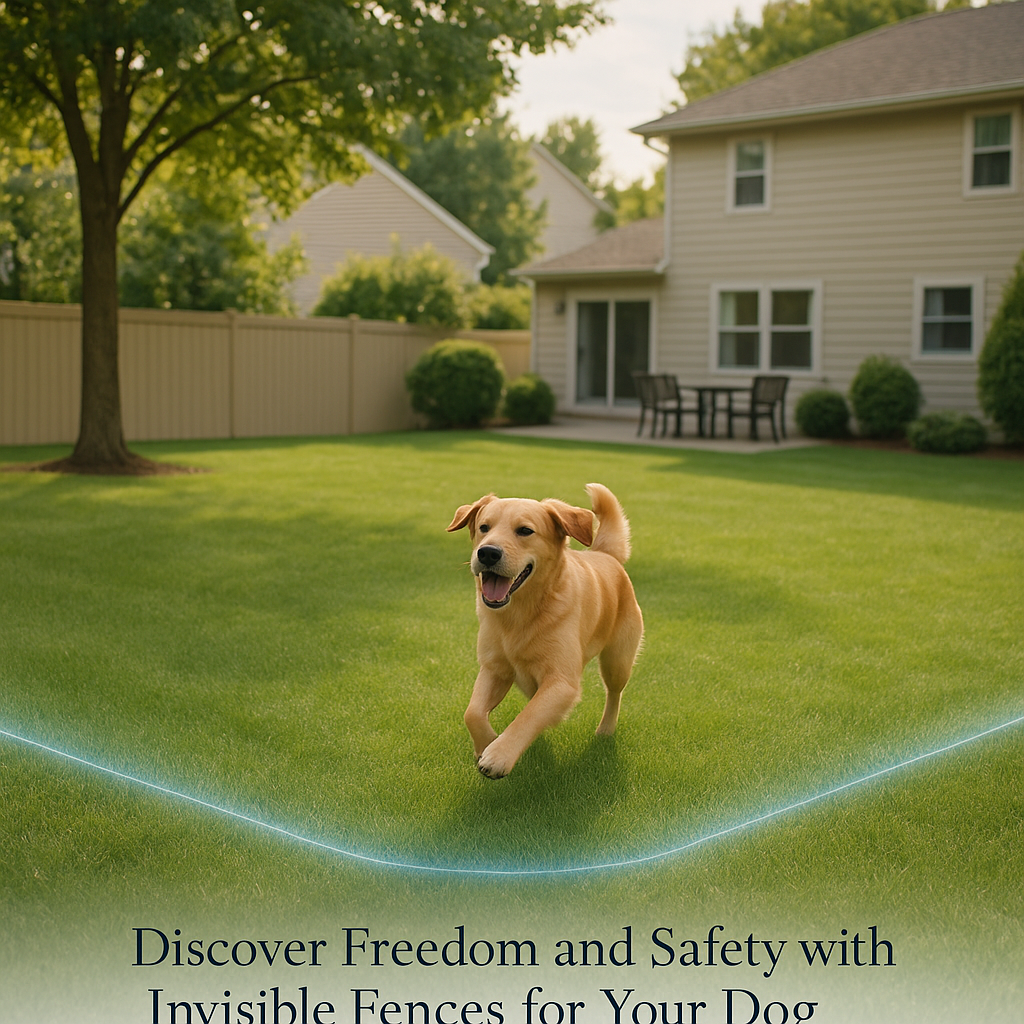The Smart Way to Secure Your Dog: Exploring Invisible Fences
If you’re a pet parent who enjoys the freedom of letting your dog roam but worries about the dangers lurking beyond your yard, an invisible fence might just become your best friend. Unlike traditional physical fences that block the view and occupy ample space, invisible fences give dogs the liberty to explore safely within defined boundaries—without the obstacle course feel.
Invisible fences are more than just a line in the grass. These systems typically consist of a buried wire perimeter that emits a radio signal detected by a receiver collar worn by your dog. As your dog approaches the boundary, the collar triggers a warning beep, and if your dog continues, a mild static correction follows. This teaches the dog to respect the limits while maintaining yard aesthetics and openness.
Why Choose an Invisible Fence?

One major advantage is that invisible fences allow puppies and dogs to experience the outdoors freely—great for their mental stimulus and physical exercise—without the hazards of traffic, wildlife, or wandering off. Aesthetically, your yard looks exactly like you want it: no metal bars or wooden slats obstructing the view or the landscape design.
From a training and behavior standpoint, these fences require consistency and patience but can result in dogs confidently understanding their “safe zone.” And if your dog is leash-averse or dislikes cages, this is a humane way to provide boundaries with minimal stress.
Installation and Technology Insights
Installing an invisible fence involves laying a thin wire around the perimeter where you want the boundaries set—this can usually be done by the homeowner or a professional service. Modern systems often use wireless options too, where signals radiate from a central transmitter, avoiding the need to dig trenches but limiting range.
The receiver dog collar is a key piece. They come in various sizes, fit puppies through large breeds, and often have adjustable correction levels to match your dog’s temperament and sensitivity. Some advanced collars even offer GPS tracking and app controls, so you get peace of mind from your phone.
Training Tips for Using an Invisible Fence
Using an invisible fence isn’t as simple as flipping a switch and letting the dog go wild—or willfully staying within invisible lines. Think of it as behavior shaping.
Begin near the starter zone where the collar correction won’t trigger. Introduce your dog to boundary flags placed along the wire to offer a visual cue. Walk them near the perimeter, allowing them to hear warning beeps and gently receive static only if they cross the line. Treats and positive reinforcement work wonders here, associating the boundary with safety rather than punishment.
Consistency across all family members is essential; mixing commands or inconsistent corrections can confuse your dog. For puppies particularly, start with short training sessions and build up their confidence—they’re learning spatial awareness along with impulse control.
Pros and Cons You Should Know
Invisible fences excel at providing freedom inside a controlled environment without unsightly barriers. In terms of pet care, they reduce exposure to dangers and make supervision easier, especially for energetic dogs who can redeem hours of exercise time in their yard.
Challenges include the technology’s reliance on collar fit and battery life—an ill-fitting collar or dead battery can void the boundary. Some dogs react poorly to corrections and may need more gradual training or alternative approaches. It’s vital to note that invisible fences won’t protect from external threats like predators, so combining this with good supervision is wise.
Moreover, dogs who are escape artists or prone to running during high-stimulus situations, like chasing squirrels or reacting to visitors, may test boundaries stubbornly. Supplement training with verbal commands and physical barriers for high-risk zones within your yard in these cases.
ID Tags and Dog Collars: Complementing Your Invisible Fence Setup
An invisible fence is a major piece of your dog’s safety puzzle but never a complete solution. Every dog should wear a sturdy dog collar fitted comfortably but securely—think snug enough that it won’t slip off but loose enough to avoid irritation.
A well-made ID tag affixed to the collar remains crucial. No technology beats good old visual identification for quick return if your dog slips through or gets lost. Tags should include your contact information and, if your dog has special needs or medical conditions, these details too.
It’s like the saying goes, “Dogs do speak, but only to those who know how to listen.” If your dog wanders off, an ID tag is a direct ‘voice’ guiding their way back to you.
Invisible Fences in Action: Real-Life Examples
Pet owners have reported significant positive changes in their dog’s behavior after invisible fence training. One dog owner recounts how their previously high-energy terrier went from darting through open gates to confidently respecting the yard perimeter, resulting in fewer stressful chases and increased outdoor enjoyment for both.
For families with multiple dogs, the system helps assign clear borders, reducing arguments over territory and ensuring everyone stays sane—and safe.
Final Thought: A Tech-Savvy Approach to Dog Safety
Incorporating an invisible fence into your pet care routine aligns perfectly if you’re the tech-savvy, outdoor-loving dog owner wanting to balance freedom and security. It streamlines training and behavior control, enhances safety, and complements other tools like ID tags and quality collars.
Mastering this system takes time and commitment, but it’s a worthy investment in your dog’s well-being. After all, giving our furry friends freedom within safety is the ultimate gift any dog lover can offer.
Tags: dog boundary system, dog containment system, electric dog fence, invisible dog fence, pet containment solutions, pet safety fence, secure dog roaming, underground dog fence, wireless dog fence